Summary
The proponent has received the last approval from the provincial government needed for their proposed construction. However this was based on inadequate environmental work done by the proponent. Furthermore, the proponent’s plan to use used overseas shipping containers instead of actual settling tanks risks contaminating the Precambrian Shield parking lot, the District Municipality of Muskoka’s land to the west of it, and the Moon River with insecticides and other unknown chemicals.
Detail
The proponent for the proposed hydro-electric generating station at the Bala falls needs two main areas of excavation, as shown below (click on all images for a larger view):
- The proposed intake would be between the District’s highway bridge and the MNRF’s Bala north dam. This proposed excavation requires a cofferdam with removable panels, so that the cofferdam could be removed within 24 hours if required to avoid flooding from a rain storm during this proposed work. The proponent hopes to start this excavation within the next week or so.
- The excavation for the proposed station would be started in a few months.
Due to rain, leaks through the proposed cofferdam, and ground water, the proponent would need to pump water from these proposed excavations. This water would likely have sediment and other materials which should not be pumped into the Moon River, so the proponent requires an approval to do this, and some of the required steps are as follows:
- The proponent prepares a plan detailing the proposed; work, locations, construction sequence, equipment, precautions and submits this application to the Ministry of the Environment and Climate Change (MOECC).
- Due to the MOECC’s Statement of Environmental Values the MOECC has an obligation that their decision-making is open. So the MOECC are to post a Proposal of these plans on their Environmental Registry web site and provide the opportunity for the public to provide comments. As provided by the Environmental Bill of Rights (EBR, more here), the public has the right to appeal any subsequent approvals to the Environmental Review Tribunal.
- Once the MOECC decides they have considered the environmental impacts of the proponent’s plans and the comments received from the public, the MOECC can issue an Environmental Compliance Approval (ECA, which is referred to as an “Instrument”) for the proposed works.
On May 30, 2016 the MOECC did post a Proposal for this ECA, with a 45-day public comment period, and on June 30, 2016 SaveTheBalaFalls.com did provide comment. However, sometime in the following two weeks the MOECC determined that: “The instrument proposal notice for the ECA was originally posted accidently on the Environmental Registry. The ECA application is exempt from posting as it was subject to requirements under the Environmental Assessment Act.” This exemption is due to Section 30 of the EBR and a main reason the MOECC claims it is to remove the right of appeal.
As posted here, on October 20, 2017 the MOECC did issue this last approval the proponent needs from the provincial government for the construction of their proposed project, and indeed it does claim: “As the decision to issue this Environmental Compliance Approval exempt from requiring an EBR posting, Leave to Appeal rights do not apply.” However, there are restrictions to this exemption, for example, that: “the environmentally significant aspects of a proposal … have already been considered in a process of public participation”. As shown below, the public has certainly not been informed of major environmental issues, nor has there been any “process of public participation” – that is, these issues were not disclosed to the public as part of the the environmental assessment process, which ended in 2013.
A main requirement for dealing with water pumped from an excavation is the settling tank, in which water slowly passes through, allowing sediments to settle to the bottom, the water can be retained and tested, and when clean and clear enough, the water is pumped into a storm sewer or to the nearest water body, which would be the Bala south channel and the Moon River for the proposed project.
The proponent’s ECA application included some pages from the Aquatech Dewatering Company, and indeed the issued ECA approval stated that the settling tanks are to be: “Aquatech Models or approved equivalent”. The photograph below shows a typical Aquatech settling tank.
The picture below shows a typical settling tank from the Atlas Dewatering Corporation.
Instead of the above commercial settling tanks, the proponent currently has six used overseas shipping containers at the north end of the Precambrian Shield parking lot, which they intend to use as settling tanks.
We frequently hear of invasive species such as the Asian long-horned beetle and Emerald Ash Borer infesting our trees, and one concern is that these could arrive inside overseas shipping containers. To prevent this, receiving countries require the shipping container manufacturers to treat the wood floors of their shipping containers with insecticides.
The photograph above is of the metal data plate riveted to one of the shipping containers currently in the Precambrian Shield parking lot. It states that the wood floor was treated with the chemical Radaleum-FHP-60.
Another one of the shipping containers currently in the Precambrian Shield parking lot states that the wood floor was treated with the chemical Talileum 300.
The active ingredient of these chemicals is Cypermethrin, which is a broad-spectrum insecticide known to be harmful to fish. While these shipping containers are old, it is not known how much of these chemicals remain, as they have likely never been washed out. Also unknown is what materials these shipping containers have been used to transport, and what harm these could cause if washed into the Moon River.
There is also some unknown black material coating the floor of these shipping containers.
As shown above, the proponent has cut holes near the top of the wall of their shipping containers, so that a section of 12″-diameter pipe will enable water to pass from one shipping container to the next.
The problem is that the pipe is rusty and no matter how much caulking is used, there will be leaks.
These shipping containers are directly adjacent to each other, arranged in a 2×3 grid, so it would not be possible to see or contain the leaks.
Similar to the back of a transport truck trailer, the end of each shipping container is a double door. While there is a gasket seal, the purpose of this is to keep water splashes out. And being more than ten years old, these rubber gaskets are deteriorating, so would not create a water-tight seal against the rusty metal. These doors would leak.
This leaking water would contaminate the Precambrian Shield parking lot, and as the ground is sloped towards Muskoka Road 169, where there is a drainage ditch leading to the Bala south channel, this would also contaminate the District Municipality of Muskoka’s land. In fact, these shipping containers are too close to Muskoka Road 169 and are partially on the District Municipality of Muskoka’s road allowance even though the proponent doesn’t have permission for this.
We have requested that the proponent not be allowed to use these shipping containers, and that they be immediately removed from the Precambrian Shield parking lot.
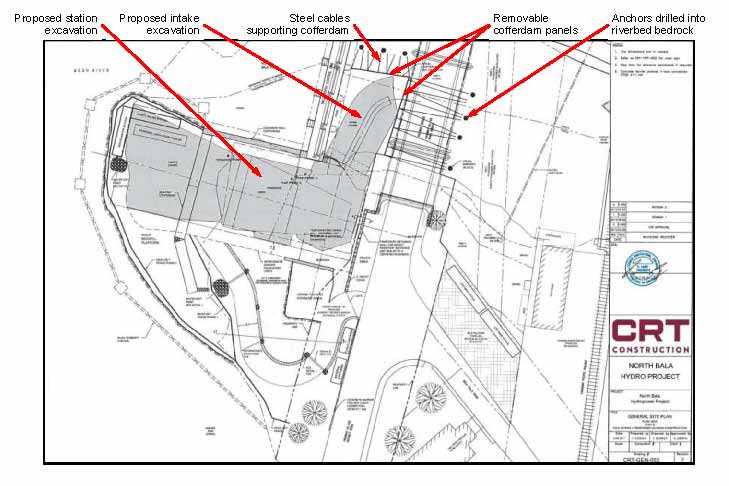
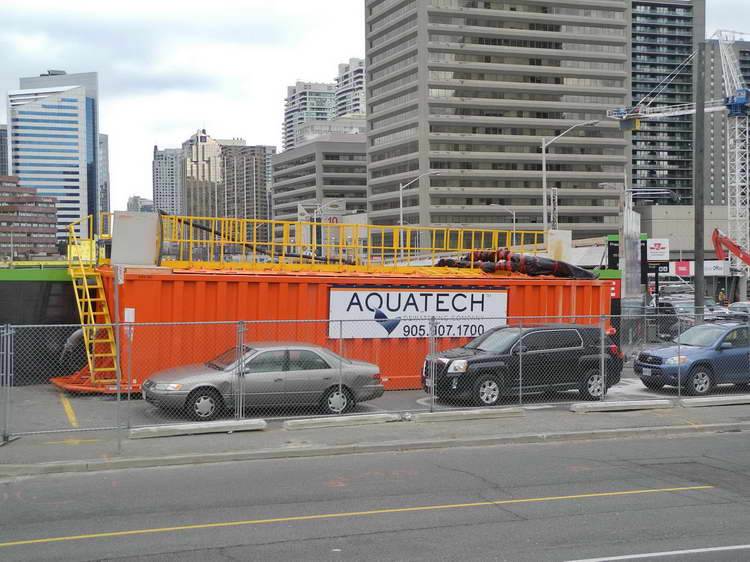
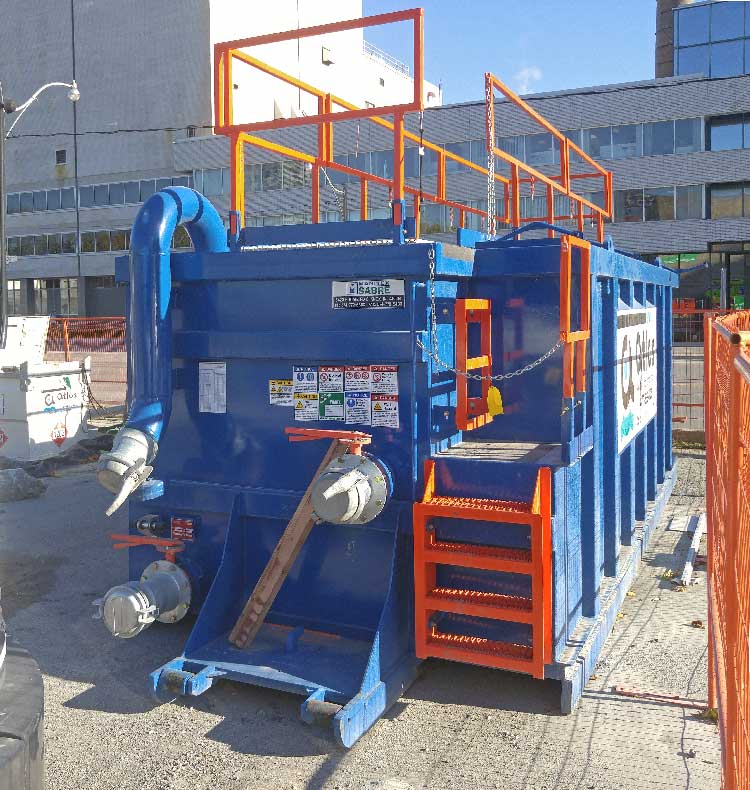
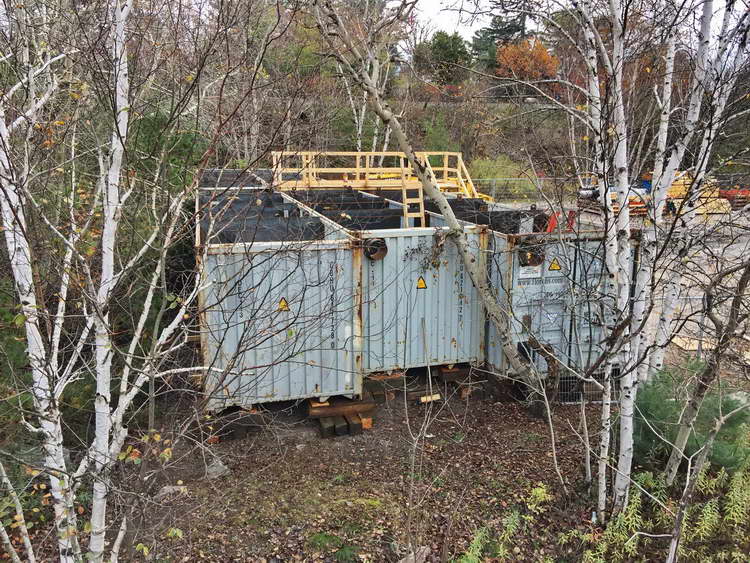
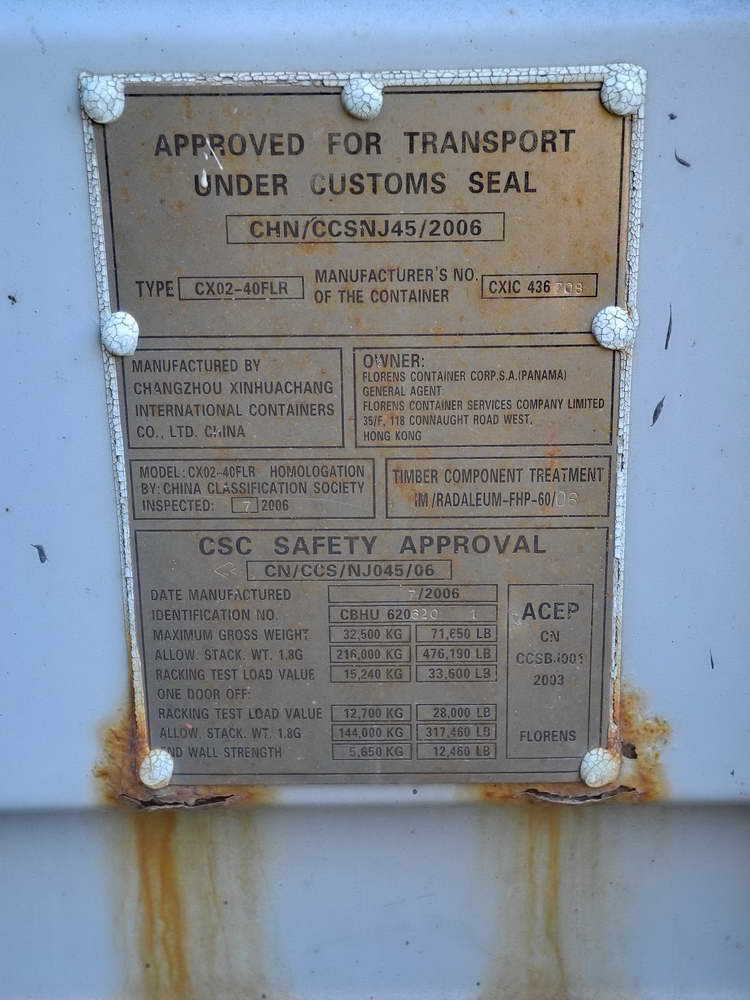
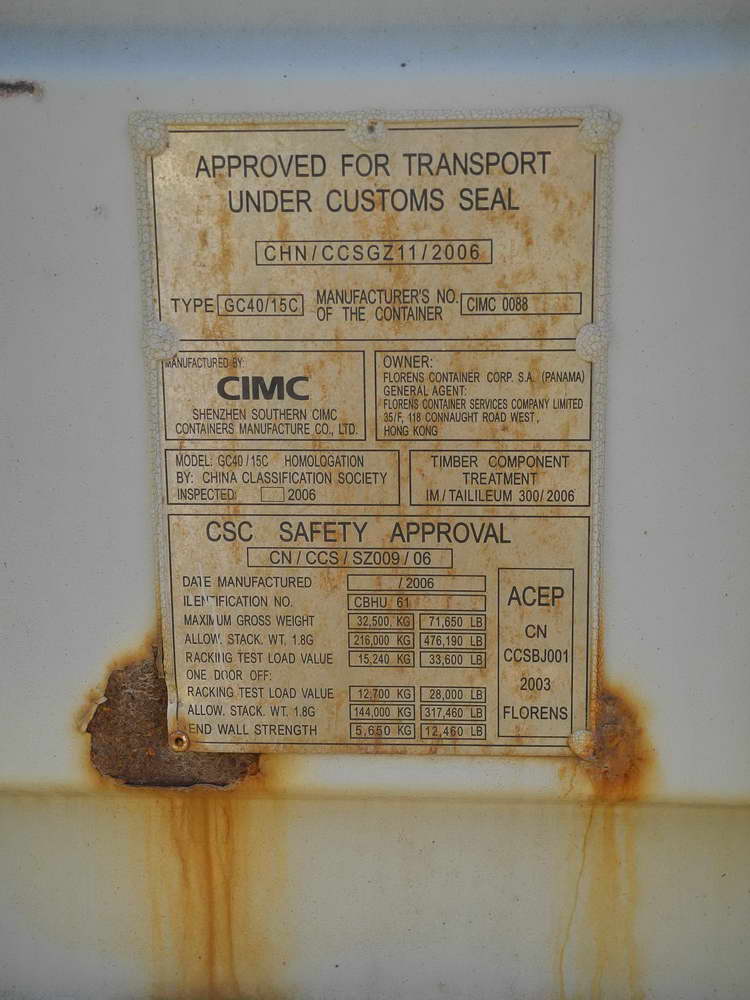
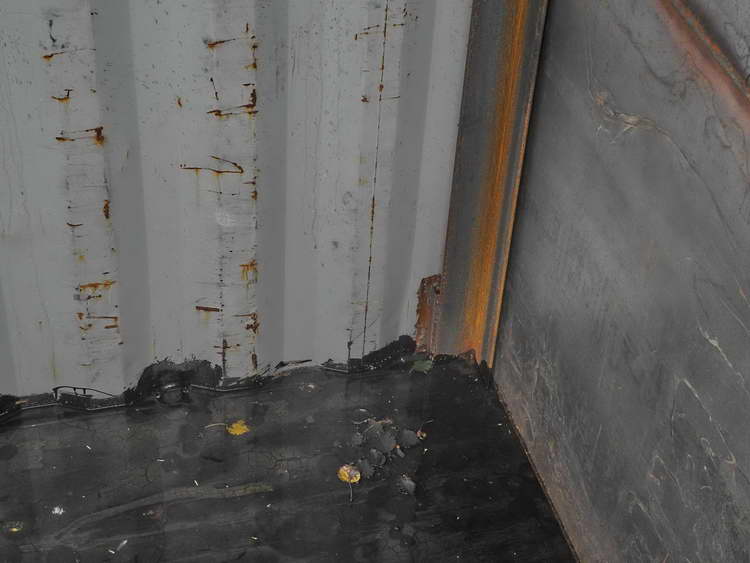
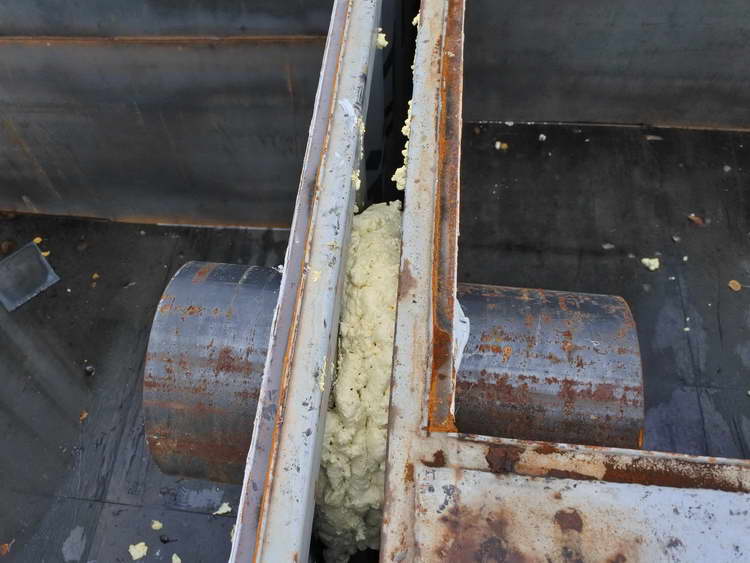
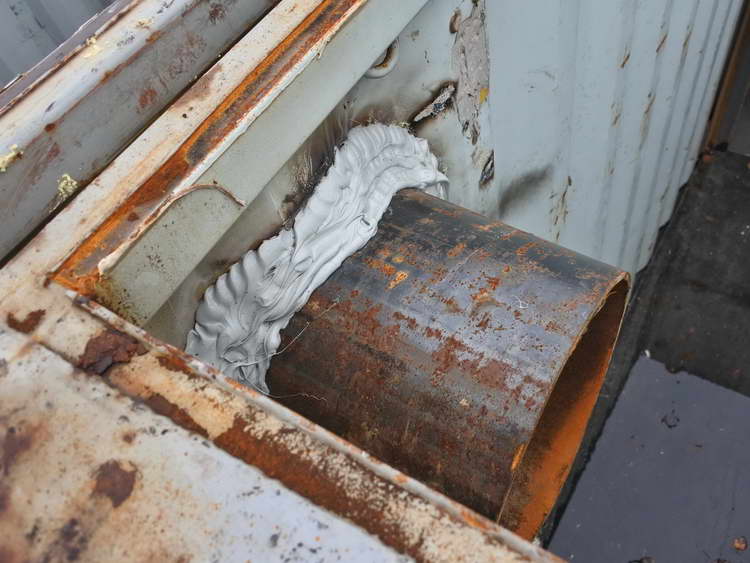
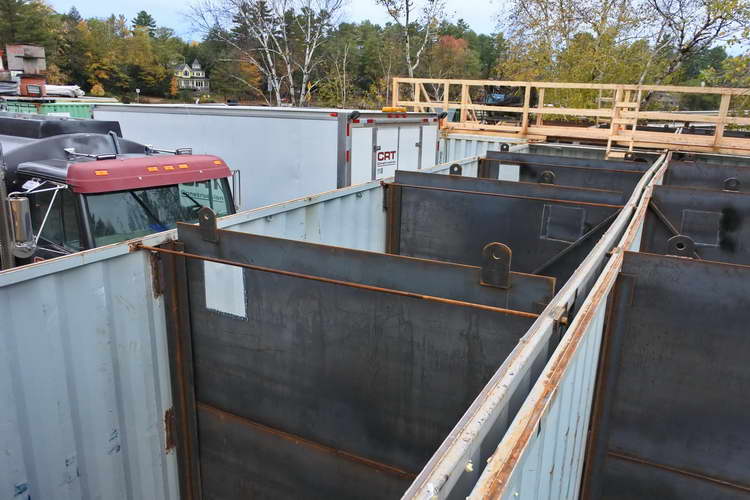
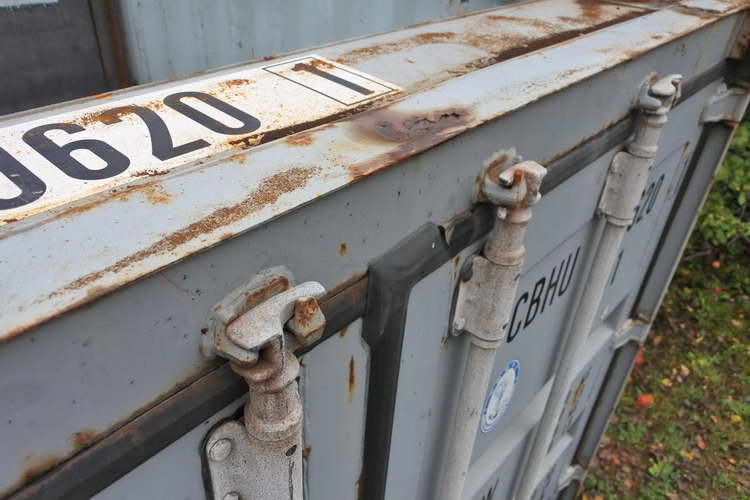
Sad what you can get away with in a ‘rural’ area. This would never fly in the city. Looking at that caulking job I wouldn’t hire SREL to reno my bathroom let alone build a hydro plant.